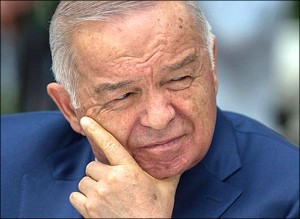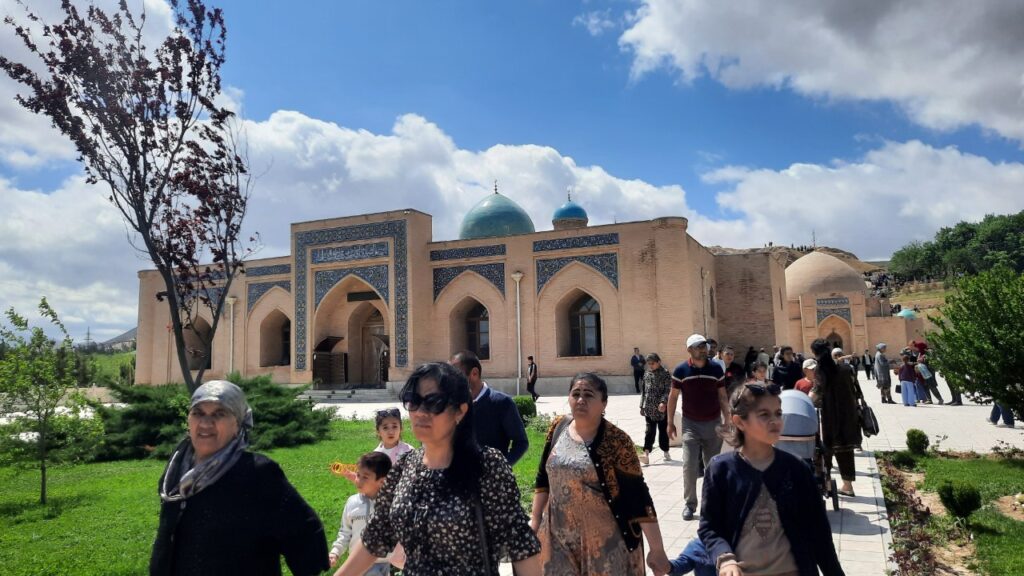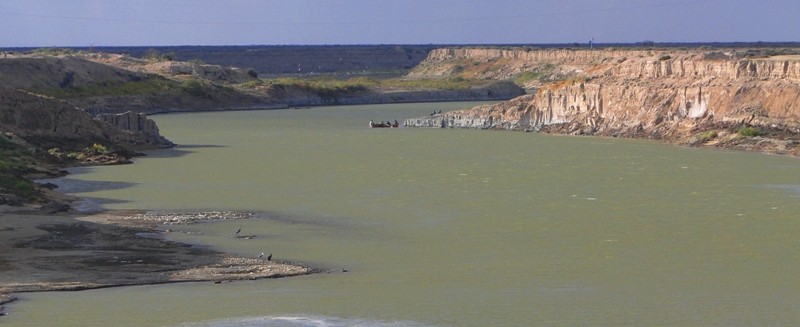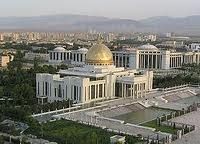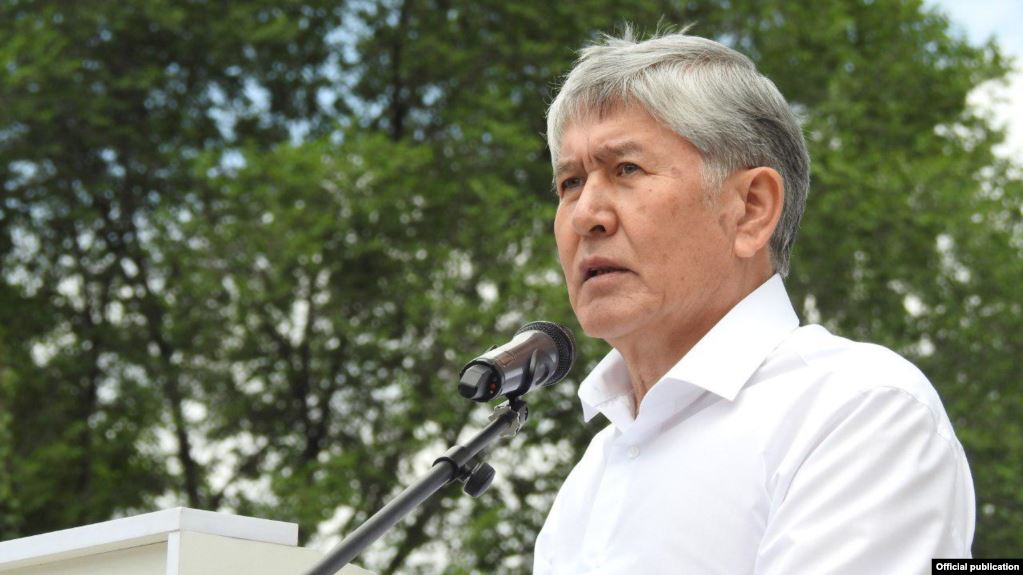TASHKENT (TCA) — Uzbekistan’s President Shavkat Mirziyoyev is cultivating the cult of personality of late President Islam Karimov in order to consolidate his power and to bolster the legitimacy of his own rule. We are republishing this article on the issue, written by Joanna Lillis, originally published by Eurasianet:
A whimsical plaque at the entrance to an exhibition hall in Uzbekistan’s capital reads: “The heart that embraced the universe.”
That may not be how many people in the country remember Islam Karimov, the late dictator who ruled for a quarter of a century until his death in 2016.
But this is the image that his reforming successor, Shavkat Mirziyoyev, wants to cultivate in the minds of his countrymen.
“The First President Islam Karimov, with his multidimensional political activities, noble qualities of his nature, left a bright and everlasting trace in the centuries-old history of our Motherland,” Mirziyoyev said in a quote rendered in Uzbek, Russian and English and posted in the exhibition hall.
On the surface, the cult of personality that has mushroomed around Karimov’s memory in the almost two years since his death seems paradoxical.
With a reform agenda that has generated hopes of a liberalizing Uzbek spring, Mirziyoyev is dismantling his predecessor’s legacy. And yet while tearing down central elements of Karimov’s legacy, the man himself is being celebrated.
“On one hand, there are lines every day at the monument to Karimov [in his hometown, Samarkand]; his ‘glorious’ name is constantly being mentioned in the context of ‘services and achievements’ of the previous era,” Daniil Kislov, the Uzbekistan-born editor of Moscow-based Fergana News, told Eurasianet by e-mail.
“On the other, Mirziyoyev’s efforts and reforms are directed toward changing from root and branch everything that Karimov did – from freeing political prisoners and liberalizing the press, to economic reforms and [formalizing] the concept of ‘labor migrants.’”
That last point was an allusion to the disdain with which Karimov regarded the hundreds of thousands of Uzbeks who, in his opinion, were an embarrassment to their nation.
The answer to this apparent conundrum is simple, suggests Kislov. Mirziyoyev may be a reformer, but as Karimov’s prime minister for 13 years, he is the product of a previous order that needs to foster a post-mortem presidential cult to bolster the legitimacy of his own rule.
“Uzbekistan remains a political system with an authoritarian leader at the helm. Previously it was a dictator, now it is an ‘authoritarian reformer’,” said Kislov. In a paternalistic system, it is logical to harness “the trenchant authority of the past as a buttress.”
By this theory, Mirziyoyev needs to tap into the Karimov brand, shaped through 25 years of relentless propaganda, even while rejecting his legacy.
This is the true purpose of “the scientific and enlightenment complex named after the first president of the republic of Uzbekistan Islam Karimov” at Oqsaroy, Karimov’s former presidential palace, in Tashkent.
A museum will open in the main building later this year, but for now an exhibition hall on the spacious grounds houses a hagiographic display of portraits, photos and sculptures of Karimov, which opened in January to mark the 80th anniversary of his birth.
The crowds were not flocking in on a rainy Sunday afternoon this spring, but a handful of visitors trailed through, stopping to take selfies with the towering Karimov statue that now stands at Oqsaroy’s entrance, its pedestal strewn with flowers.
Visitors then proceeded inside to marvel at portraits of Karimov that ranged from the kitschy and whimsical to the Stalinist socialist realist.
Here he was standing in a cotton field, micromanaging an economy that turned into a basket-case under his rule. There he appeared grave at a UN podium as he addressed the international community.
Another picture, painted in 2005 – the year that an uprising in the city of Andijan was crushed by indiscriminate use of live fire – showed him as a young besuited cadre flanked by elders in traditional Uzbek robes and skullcaps who were, as the caption explains, giving the future president a blessing “for his hard work and care for the people.”
Other pictures depicted Karimov in more tender moments, carrying aloft a girl wearing a traditional ikat silk dress or gazing across a lake with his wife Tatyana as a stork flies by.
Tatyana Karimova features heavily in photographs from the family album, as did his grandchildren. But there are glaring gaps. The late dictator’s two daughters, Gulnara Karimova and Lola Karimova-Tillyaeva, were conspicuous by their absence.
“There are no pictures of them in this hall,” a guide acknowledged, adding evasively when pressed: “I do not know anything about anything other than what is shown in these pictures.”
Gulnara’s absence is down to her spectacular fall from grace in 2015, when her father had her placed under house arrest as an international bribery scandal swirled around her. She is now serving a jail sentence on corruption charges.
Her son features in the photo exhibition as a child riding a bicycle with his grandfather, but Islam Karimov Jr. is now out of the family fold and seeking political asylum in the United Kingdom.
As for Lola, she is a founder of the Islam Karimov Foundation, which is behind the museum, so her invisibility at its first exhibition is intriguing.
It adds weight to reports, following her resignation as UNESCO ambassador and the erosion of family business interests inside Uzbekistan, that the Mirziyoyev regime is snubbing Lola and her oligarch husband Timur Tillyaev.
Where inconvenient family members are being airbrushed out of history, the Karimov cult will thrive, since the man himself is intrinsic to Mirziyoyev’s ongoing attempts to consolidate his power base.
Mirziyoyev is, argued Kislov, only following Karimov’s lead by picking a figure from the past for society to coalesce around in the present.
Karimov used the medieval warrior Amir Timur, better known in the West as Tamerlane, turning him into “a semi-mythical figure symbolizing the potency of power and its trenchant nature.”
Uzbek propaganda has long depicted Karimov as the bulwark of Uzbekistan’s stability, so “there is no better symbol than Karimov for Mirziyoyev,” said Kislov. “It is as if he is telling society: We are preserving the Karimov-era peace and stability; do not fear anything; […] be confident in your future.”
Getting Uzbek’s “politically infantile” society to swallow the narrative that Karimov is Uzbekistan’s modern founding father, just as Amir Timur is its ancient one, will be easy, said Kislov. Public opinion is “pliable to manage, as voluntarily subservient to the new ‘father of the nation’ as it was to the old idols.”
Entries in the visitors’ book at the exhibition waxed lyrical about Karimov, indicating that the power of propaganda was doing its job.
“Islam Karimov, who was respected and dear to me: I used to love you and I will continue to love you,” read one entry. “May you be taken by Allah’s mercy.”
